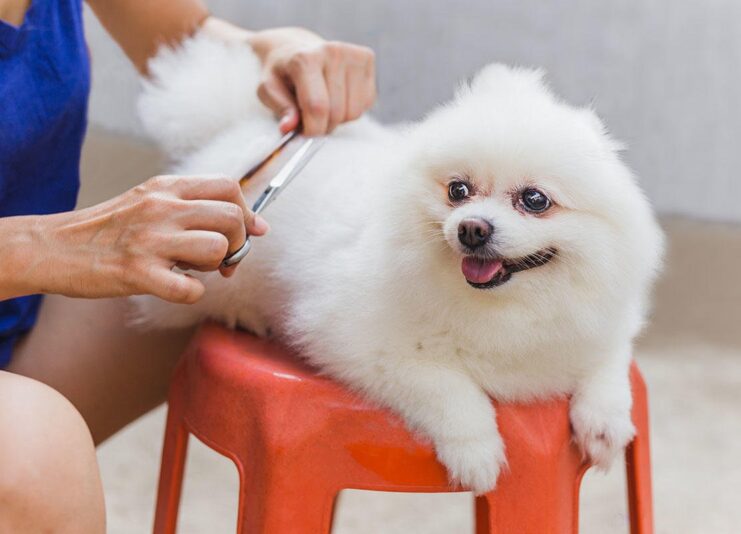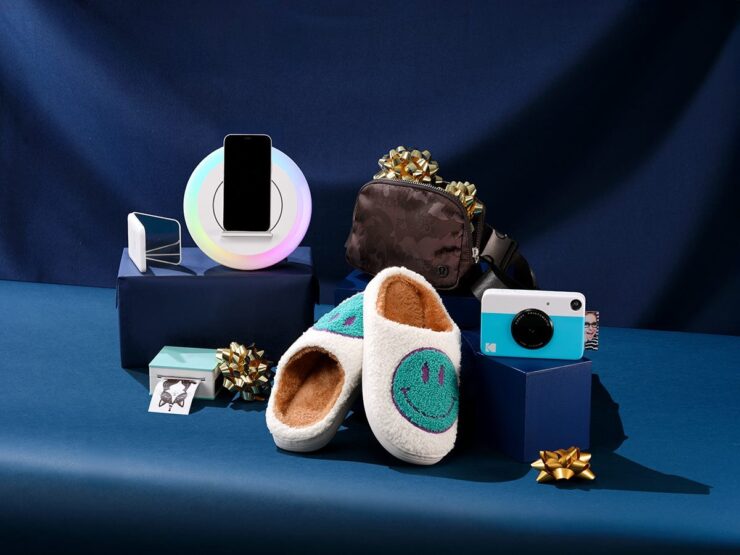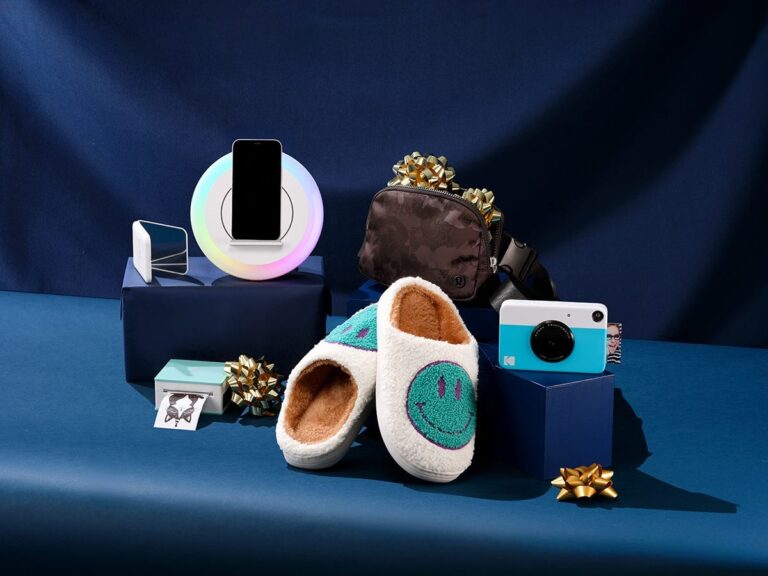Professional groomers will insist that pet grooming isn’t a one-size-fits-all affair. Some dogs strut around with hair that’s forever flawless, while others demand regular trims. Got a beagle or a boxer? No salon visits required! But if you’re rocking a poodle or a Pekingese, better keep those clippers close.
But hold your doggie brush! Just because your pup doesn’t need frequent haircuts doesn’t mean they’re off the hook. These smooth operators still need TLC, including baths, nail trims, and regular brushings. Keep your fur baby looking fab!
Daily Grooming Routine
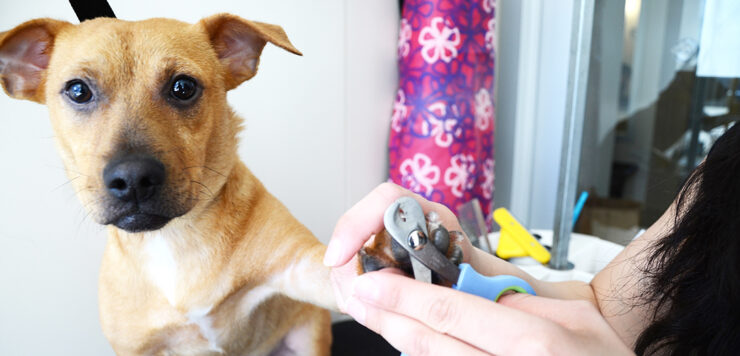
Whether you’re doing your own grooming or taking your pet to a professional groomer, there are some things you should do on a regular basis.
One of the best things you can do is brush your pet with the type of bristles that are best for your dog breed. If you aren’t sure, ask a professional groomer or do some breed-specific online research.
Brushing helps remove excess dirt and prevents matting. You’ll also find that even with short-haired breeds, daily brushing helps keep your dog’s coat shiny and healthy looking.
Brushing is also great bonding time. Don’t rush it.
You should also make light cleaning a regular thing.
A damp towel or grooming mitt can help you remove excess mud and dirt after your pet comes in from outside. You can easily wipe your dog’s paws and, while you’re doing so, check them for injury.
If needed, dry shampoo can be a great refresher but check the ingredients carefully to make sure they’re safe. You’ll also want one that includes a bacteriostatic that kills and inhibits the growth of the bacteria that cause odor rather than merely covering it up.
Choose Right Equipment
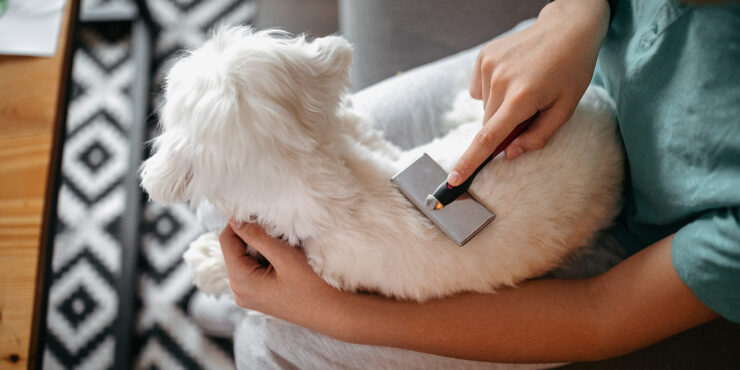
Once you have determined what you plan to do yourself, make sure you have the right materials handy to make it happen.
First, you’ll need a safe, well-lit place to do the work. Doors that close can help prevent run-offs.
If your pet tends to fight baths, you may even need help making sure he doesn’t try to escape while covered in pet shampoo.
Here are the supplies you might need, depending on your dog’s grooming needs and how much you plan to do yourself.
- Hair Clipper – A clipper is a useful way to quickly shorten your pet’s coat. You’ll need to make sure your clipper stays sharp to avoid pulling your pet’s hair while you’re clipping.
- Scissors – Professional dog groomers, like hairstylists, use professional-grade scissors to get the right cut. Dull scissors can lead to uneven results. Watch out though, professional-grade scissors can be surprisingly sharp, so take extreme care while you’re using them.
- Nail Clippers – You should purchase special nail clippers to trim your pet’s nails. You can also use a nail grinder for the task. Make sure you have a way to keep your dog still while you’re clipping to avoid injury to your dog or yourself. For best results, purchase a snap-on guide comb to get the length you want. Personally, I go with the grinder. I find it leaves a smoother, less jagged edge. But this is really about your comfort level.
- Brushes – The big challenge with choosing a brush is that the best dog brush varies by breed. If your pet has short hair, you’ll need a brush that’s more like a comb, while long-haired dogs need a brush with rounded tips to reduce pain while detangling. You can also find brushes that minimize shedding.
You can buy professional grooming products from Pride & Groom Pro
Bathing Your Dog
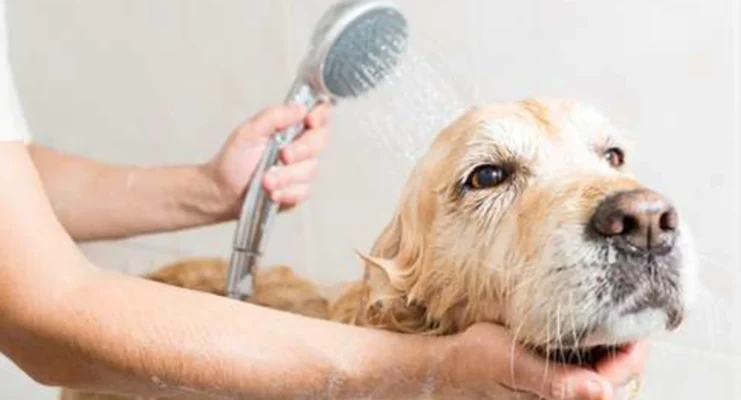
You likely know that you don’t need a professional to bathe your dog.
In fact, there are even self-serve dog wash locations all over the U.S.
There’s a reason these facilities have become so popular. Washing your dog at home can be challenging, especially if you don’t have a shower head that you can use as a sprayer. A self-serve place will let you do the work without having to clean up the mess afterward. That alone is worth the price of admission.
Here are some steps to help your dog wash go smoothly.
- Gather the right products. You’ll need a shampoo and conditioner set made specifically for dogs. Pets have a different pH than humans, so human shampoo can irritate their skin and eyes.
- Find a good spot. You can go with a self-serve place or use a bathtub in your house. Some people even set up a dog-washing area outside during the warmer months. You can use a bathtub or, if your dog is small, a kitchen or bathroom sink. Some houses even have a utility sink in the laundry room that’s ideal for bathing smaller dogs.
- Have all your products within easy reach at the station you’ve set up. That includes shampoo, conditioner, brushes, a washcloth for cleaning your dog’s face, and sponges. Don’t forget to have a drying shammy or towels close by for drying your pet off. Once your dog is wet, you won’t be able to walk away to gather anything.
- Coax your pet into the dog-washing station. Use toys to distract your dog while you’re working and issue plenty of praise if he stays on command.
- Warm the water to a comfortable temperature before wetting your dog.
- Do two rounds of shampoo, rinsing thoroughly after each one. With the first round, you’ll loosen up dirt, but the second round removes any dirt that stubbornly sticks to fur and skin. A sponge can help spread the shampoo. Make sure you get every area, including his belly and paws, but skip the face for now.
- Once the second dose of shampoo has been completely rinsed, apply conditioner and let it soak in for a few minutes. Make sure you rinse thoroughly.
- As a final step, dip a washcloth in soapy water and carefully wash around the pet’s face. Avoid getting the shampoo in the pet’s eyes.
- If you’ve managed to keep your dog from shaking off, tossing water everywhere, it’s time to dry him off. First use the shammy or towels to soak up as much water as possible. Then you can use a hair dryer on warm mode to dry off the rest. Some dogs are fine with air drying, but if your dog is easily chilled, drying him can help keep him comfortable.
Trimming Your Dog’s Coat
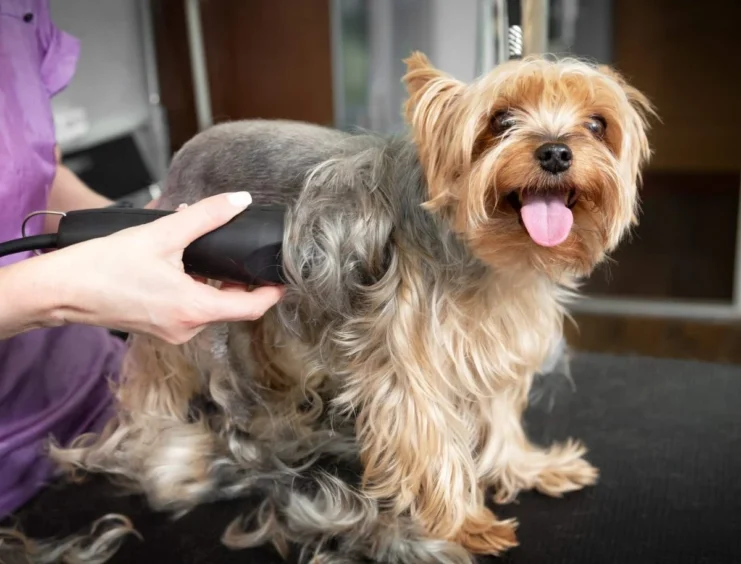
The best time to give your dog a haircut is right after a bath. Not only will the hair be free of mattes and tangles, but damp hair is easier to manage.
Either dry your pet with a hair dryer or towel him off and let him air dry before getting started.
You have options when it comes to trimming your pet’s coat. You can use clippers, scissors, or a combination of both.
It’s important to have high-quality, sharpened tools and to use those tools with care.
Before you start clipping or cutting, take the time to brush your dog’s hair, which will get out any mattes and make it easier to see what you’re doing while you’re working.
If you opt for clippers, run the clipper in the direction in which your pet’s hair grows. Avoid getting too close to the dog’s skin to avoid cutting him. For longer hair, a clip-on guide comb can help with this.
It’s best to pay close attention to how your breed is typically cut, which may mean keeping the fur a little longer in areas around the head or under the arms.
With scissors, your fingers become the guide. Once you’ve decided how long you want the hair to be, you’ll measure out each section you cut with your fingers. This will provide a more even look.
The length doesn’t have to be identical everywhere. Some owners prefer to have the belly shorter than the hair on the back, for instance.
The length isn’t the only thing to consider when you’re cutting. Thinning shears can help make a dog’s coat more manageable between cuts.
A pair of curved scissors can also be a good addition to your grooming toolkit. Curved scissors help you create more of an angle to make the haircut look more natural.
Final Thoughts
Always finish any grooming session with an inspection of your dog’s ears and teeth.
Wipe ears out with a cotton ball moistened with rubbing alcohol or mineral oil. If you haven’t been doing this since your dog was a pup, it may take some getting used to. Ears can be very sensitive.
Look inside the ear. Wax buildup and overgrown hairs can cause hearing issues. Cleaning this out is a job for a professional groomer or vet.
Dogs can develop tarter and gum disease just like you or me. Make teeth brushing a regular routine.
It will save you and your dog from a lot of costly issues down the road.
Use a toothbrush and toothpaste made especially for dogs. Dogs don’t spit, so it needs to be safe to swallow.
Use a gentle, circular motion and give equal attention to the teeth and the gumline.
Related Posts:
- How To Feed Your Dog Correctly: Tips And Recommendations
- Decoding Dog Behavior: How to Train a Dog to Sit –…
- How to Compile a Photo Book of Your Best Coral Reef…
- Best Feng Shui Colors for Enhancing Your Home’s Energy
- Rat-Proofing Your Home - 9 Best Long-Term Solutions
- Exploring Egypt: When is the Best Time to Visit?…

